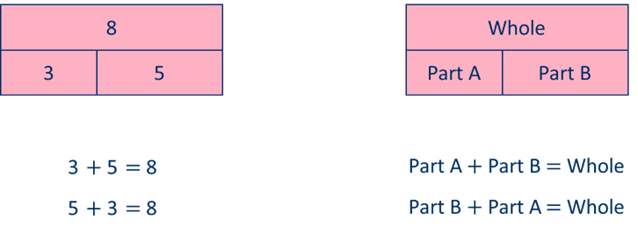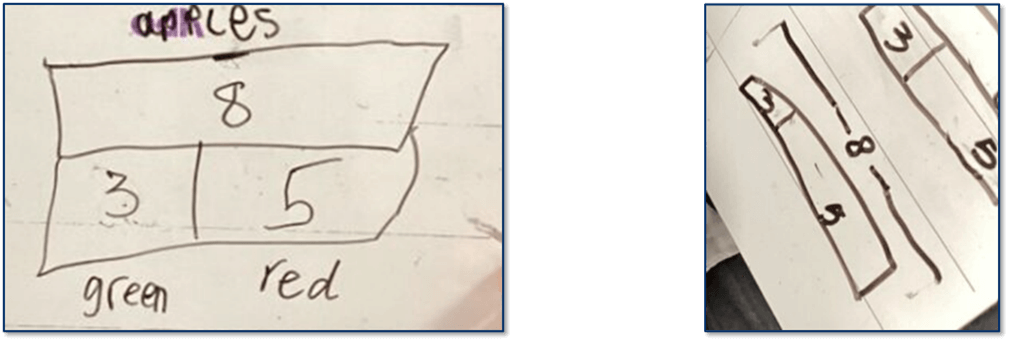The role of bar model drawing techniques in developing critical thinking skills
Exploring Bar Model Illustration Techniques: A Comprehensive Overview to Picturing Math Concepts
Bar version attracting techniques act as a useful source for both instructors and students in visualizing mathematical concepts. These versions streamline intricate mathematical relationships, assisting in the comprehension of enhancement, reproduction, subtraction, and department. This guide lays out efficient strategies for executing bar models, promoting energetic engagement and real-world links. As readers check out the practical applications and mentor tips, they will discover exactly how these strategies can change their method to maths.
Understanding the Fundamentals of Bar Version Illustration
Bar version attracting functions as an effective visual tool in mathematics, promoting the understanding of analytic approaches and mathematical connections. This technique involves representing numbers and their relationships with rectangle-shaped bars, making it less complicated to picture procedures such as addition, reduction, multiplication, and department. Each bar's size represents a certain worth, allowing students to compare quantities and comprehend proportions clearly.
To produce a bar model, one starts by determining the trouble's crucial components, usually damaging it down into parts that can be aesthetically represented. In a simple addition trouble, 2 bars can be drawn, with their sizes representing the addends. The combined length shows the sum. On top of that, bar models can be adapted for much more complex issues, including portions and ratios, by readjusting the bars as necessary. Understanding these fundamentals lays a strong structure for effective problem-solving and deeper mathematical comprehension.
Benefits of Making Use Of Bar Models in Mathematics
Using bar versions in maths supplies many advantages that enhance understanding and comprehension. These graphes aid trainees in comprehending complex ideas by breaking them down into manageable elements. Bar designs supply a clear structure for showing partnerships in between numbers, making abstract ideas much more concrete. They promote a deeper understanding of mathematical operations and facilitate analytical by enabling students to picture the information they are dealing with.
Furthermore, bar designs support the development of essential thinking skills, as pupils must analyze and translate the aesthetic information to draw conclusions. This approach motivates energetic interaction with the product, reinforcing retention and mastery of mathematical principles. By fostering a solid structure in visual proficiency, bar versions empower learners to approach different mathematical challenges with self-confidence. On the whole, the combination of bar designs into maths education and learning confirms valuable in cultivating both comprehension and analytical capabilities among pupils.
Applying Bar Models to Enhancement and Reduction
Bar models offer as a reliable tool for aesthetically standing for addition and reduction troubles. By highlighting the connection in between numbers, they enhance understanding and promote analytic. Furthermore, real-life applications of these versions can aid students understand mathematical ideas in functional contexts.
Representing Enhancement Aesthetically
Aesthetic aids can substantially improve their understanding of these procedures when trainees experience addition and reduction issues. Bar designs act as effective tools for representing enhancement. By splitting a rectangle right into segments that represent the numbers entailed, students can imagine the relationship between the amounts. If a student needs to add 3 and 5, they can create a bar split into two areas: one section standing for 3 and the various other standing for 5. This clear depiction not only simplifies the enhancement process but additionally enhances the concept of integrating quantities. As pupils adjust these visual help, they develop a much deeper comprehension of enhancement, leading to improved problem-solving abilities and better confidence in their mathematical capabilities.
Subtraction With Bar Versions
Reduction is commonly perceived as an extra complicated procedure than enhancement, bar designs can efficiently clarify this process for trainees. By visually representing the quantities included, students can better comprehend exactly how numbers connect to one another. In a bar design for subtraction, one bar stands for the total, while an additional shows the quantity being subtracted. This aesthetic distinction aids trainees understand the idea of "eliminating." If a bar shows 10 devices, and an additional bar standing for 4 devices is eliminated, pupils can easily see that 6 units remain. This method not just fosters understanding of reduction however additionally help in developing problem-solving abilities, allowing students to picture their mathematical thinking and improve their general comprehension of mathematical concepts.
Real-Life Application Examples
Comprehending reduction with bar versions lays a structure for applying these methods in real-life scenarios. In different contexts, such as budgeting or shopping, individuals can picture just how much cash continues to be after costs. For circumstances, if a person has $50 and spends $20, a bar version can represent the overall amount and the invested part, illustrating that $30 is left. Additionally, moms and dads can make use of bar designs to aid kids understand the number of even more items require to be contributed to finish a set, such as having three apples and needing 5. This graph simplifies complex issues, assisting in comprehension and retention. Eventually, bar models function as effective tools in everyday decision-making, improving mathematical understanding in functional circumstances.
Visualizing Multiplication and Department With Bar Designs
In checking out the application of bar designs for multiplication and division, it is important to understand their fundamental concepts. Building multiplication designs permits learners to envision relationships in between numbers, while effective division techniques can be shown via these visual aids. This approach boosts understanding and problem-solving abilities in maths.
Understanding Bar Models
Bar versions serve as a powerful aesthetic device for showing the ideas of reproduction and department. They make it possible for students to represent mathematical connections in a structured format, assisting in a much deeper understanding of these operations. In multiplication, bar models present groups of equivalent dimension, enabling individuals to imagine the complete quantity when combining these teams. Conversely, in department, bar designs aid depict just how a total is separated right into smaller sized, equal parts, making clear the principle of dividing. By utilizing these aesthetic help, students can understand the underlying concepts of multiplication and department better. This method not only boosts understanding but additionally supports analytic skills, making bar models an indispensable property in mathematical education.
Constructing Multiplication Versions
Constructing reproduction designs making use of bar diagrams uses a clear method for picturing the process of reproduction. These models make it possible for learners to stand for multiplication as groups of equal parts, making abstract concepts a lot more concrete. To show (3 times 4), a trainee can attract one bar separated into three equivalent segments, each representing 4 units. get redirected here Furthermore, creating a second bar with the same length reinforces the understanding of duplicated addition, as each segment corresponds to one team. This aesthetic depiction not only help in understanding multiplication however also improves analytical skills. By using bar designs, pupils can better comprehend connections in between numbers and establish a robust foundation for a lot more complicated mathematical concepts, resulting in boosted confidence in their abilities.
Visualizing Division Techniques

Addressing Word Troubles Making Use Of Bar Model Techniques

For example, in a problem involving enhancement and subtraction, trainees can draw separate bars for every quantity and then control them to find the service. This process not only clarifies the issue but additionally cultivates a deeper conceptual understanding. Bar designs can be adjusted for different types of word troubles, making them versatile throughout different mathematical subjects. Eventually, utilizing bar designs can considerably enhance trainees' analytic skills by providing a clear aesthetic path to get here at the proper response.
Integrating Bar Models in Various Mathematics Topics
Bar models can be effortlessly integrated into numerous mathematics topics, boosting students' understanding of principles past fundamental arithmetic. In algebra, these aesthetic tools help in standing for inequalities and formulas, allowing learners to envision relationships between variables. When taking on geometry, bar designs can show the homes of forms and spatial reasoning, helping students realize concepts like area and boundary successfully. In stats, bar versions help with the analysis of information collections, permitting trainees to compare quantities and identify patterns aesthetically. Furthermore, integrating bar versions within dimension subjects aids in recognizing units and conversions by supplying a tangible representation of quantities. By employing bar designs across different mathematical locations, instructors can cultivate a much deeper understanding of complicated principles, therefore enhancing analytic skills and promoting important reasoning (bar model drawing techniques). This versatility shows the utility of bar versions as a foundational tool for trainees in their mathematical journey
Tips for Training Bar Versions Properly
Incorporating bar models into teaching methods needs thoughtful strategies to maximize their performance. Educators needs to begin by presenting bar designs with straightforward, relatable instances that pupils can conveniently realize. This helps to build confidence and familiarity with the idea. Progressively increasing the complexity of troubles permits students to apply their skills progressively. In addition, teachers should encourage pupils to produce their own bar designs, advertising active involvement and ownership of their learning.
Integrating joint activities can additionally boost understanding, as pupils go over and address troubles in teams. Continual responses is necessary; instructors need to supply useful commentary on trainees' bar model depictions to lead improvement. Linking bar versions to real-life scenarios strengthens their relevance, helping pupils see the sensible applications of their mathematical skills. By carrying out these strategies, educators can efficiently harness the power of bar versions in their maths direction.
Often Asked Inquiries
Can Bar Models Be Utilized in Other Topics Besides Mathematics?
Bar versions can without a doubt be utilized in numerous topics beyond mathematics. They successfully highlight principles in scientific research, social studies, and language arts, aiding to visually represent partnerships, procedures, and concepts go to this web-site for boosted understanding across disciplines.
What Age Is Best Fit for Discovering Bar Versions?
Bar designs are best fit for children ages 7 to 12, as they develop concrete reasoning abilities throughout this duration (bar model drawing techniques). At this age, pupils can effectively understand abstract principles with graph and problem-solving techniques
Are There Digital Equipment for Creating Bar Designs?

How Can I Evaluate Student Comprehending of Bar Designs?
Assessing student understanding of bar designs can involve tests, empirical evaluations, and team discussions. Teachers could likewise analyze trainees' finished models and their ability to describe their reasoning, making certain a complete examination of understanding.
What Prevail Errors When Making Use Of Bar Versions?
Typical blunders when making use of bar models include misstating quantities, stopping working to accurately identify bars, perplexing enhancement and subtraction, disregarding click now to make use of regular scales, and ignoring the importance of clear aesthetic splitting up in between various elements.
In addition, bar models can be adapted for a lot more complicated problems, including portions and ratios, by adjusting the bars appropriately. Subtraction is frequently regarded as an extra intricate procedure than addition, bar models can efficiently clarify this process for trainees. In a bar model for reduction, one bar represents the overall, while an additional indicates the amount being subtracted. If a bar shows 10 devices, and another bar representing 4 systems is eliminated, pupils can quickly see that 6 units continue to be. When splitting a total right into equivalent teams, pupils can draw a lengthy bar to stand for the whole and then section it right into smaller bars that suggest each group.